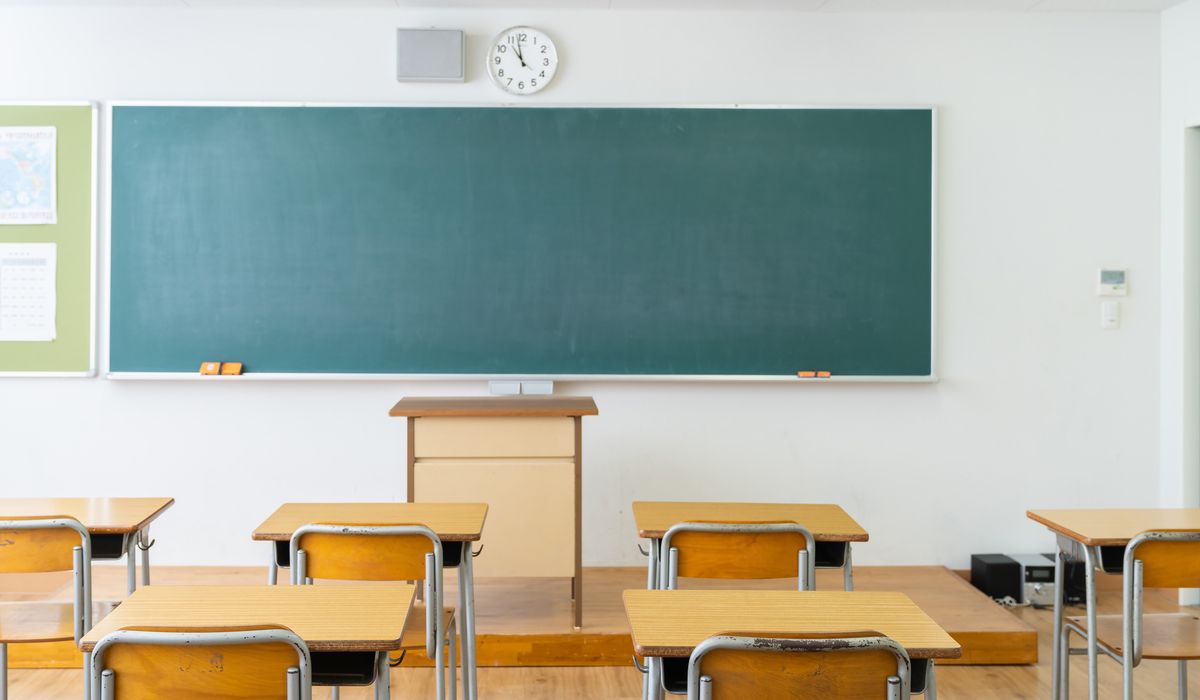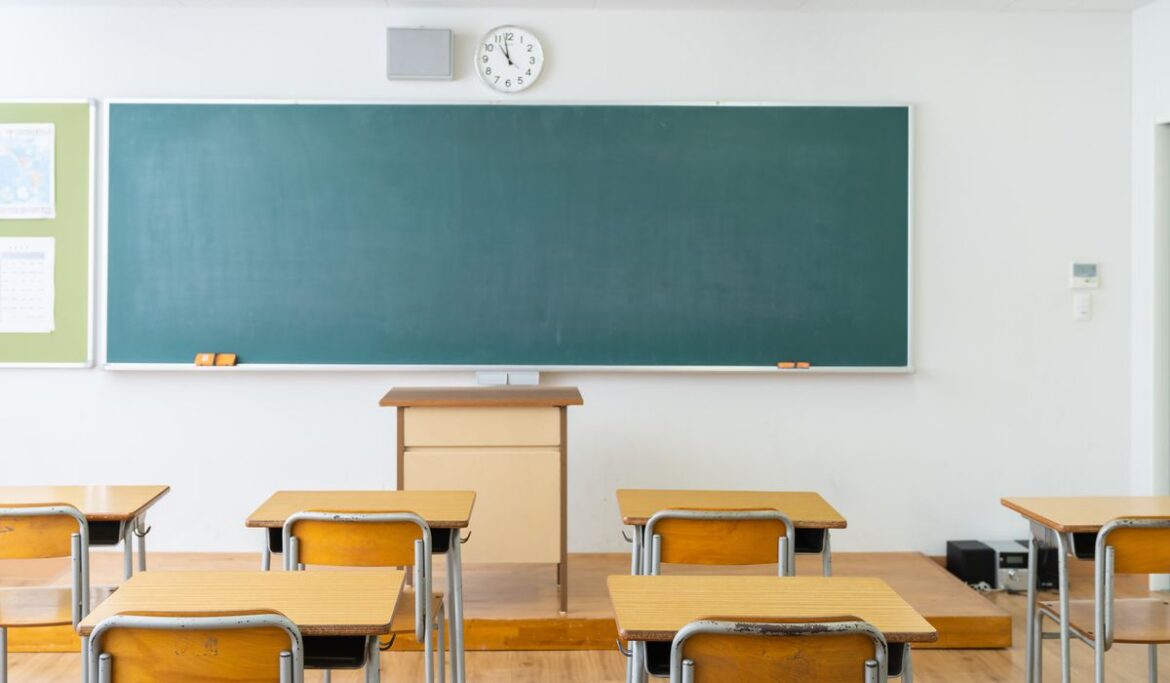
When the country’s top-ranked public high school changed its admissions policy two years ago, it insisted the goal wasn’t to hurt Asian Americans.
Nonetheless, offers of enrollment to Asian American students at Thomas Jefferson High School for Science and Technology, in Fairfax County, Va., plummeted from nearly three-quarters of the incoming class down to 54% — a 19-point drop.
In Montgomery County, Md., another premier school system, officials likewise insisted they wanted to help Black and Hispanic students, not punish Asian Americans who made up a disproportionate number of spaces at the county’s selective magnet schools.
But offers of enrollment to Asian American students at Takoma Park Middle School’s STEM Magnet Program slipped from 39% to 31% in 2018, after the county changed its admissions policy. Hispanic and Black students saw big gains, and even White students grabbed a larger share of offers, topping Asians for the first time in years.
Meanwhile at magnet schools in Montgomery County where the changes weren’t made, Asian Americans saw their share of offers increase.
As school districts across the country rush to rebalance their selective programs to help Black and Hispanic students, it’s becoming clear that it often comes at the expense of another minority.
A case involving Harvard University and its treatment of Asian American applicants is pending before the Supreme Court, with oral arguments expected to be held in the justices’ next term.
The question before the court is whether affirmative action policies designed to help one demographic are legal if the result is disproportionately damaging to another demographic.
Schools say they’re trying to help traditionally disadvantaged demographics, and they intend no harm to Asian Americans. Some school systems have carefully structured their policies to be facially race-neutral, using other yardsticks such as geographic diversity to change the composition of their student bodies.
Opponents of the schools’ admissions policies, though, say admissions are zero-sum. Any policy aimed at helping someone get a spot means someone else is losing out. And increasingly, it’s Asian Americans who lose.
“Asian American students are being discriminated against,” said Ilya Shapiro, a Supreme Court and judicial nominations expert. “I think the Supreme Court’s guidance will broadly have an effect on any sorts of affirmative action programs.”
Past Supreme Court decisions have limited how schools can pursue affirmative action, finding that quotas and similar stark racial dividing lines are illegal, though diversity itself can be a factor in admissions.
That’s what Harvard says it does, whittling some 15,000 applicants from “fully qualified” people down to just 1,600 spots. The school says it’s not picking unqualified applicants over qualified ones, but selecting a more diverse group of qualified ones than it otherwise might.
Harvard acknowledges its policy is “race-conscious.”
Other schools say their changes are race-neutral, using other yardsticks such as income or geographic diversity to boost minority numbers.
In Fairfax County, shortly after the death of George Floyd in 2020, Thomas Jefferson’s principal said something needed to change. The racial composition of students was too out of kilter with the racial makeup of the county, she said.
The school board agreed, moving to ditch application fees and an admissions exam, while reserving spaces for students from middle schools that didn’t traditionally send as many kids to Jefferson.
On its face, the policy doesn’t target race, but given the realities of where Asian families live, the effect was to slash their numbers.
Offers of enrollment to Asian American students from Fairfax County fell to 54% for the Class of 2025, down from a year before when they made up 73% of admitted students, according to data from the Coalition for TJ, which sued to challenge the school’s new policy.
About 20% of the county’s population is Asian, and so is the student population in the county’s public schools.
Black students were the winners in the change at Jefferson, with offers of enrollment surging to 7% of the incoming class, up from 1% for the Class of 2024. Hispanic enrollment offers reached 11%, up from 3%, and White enrollment rose from 18% to 22%. Multiracial enrollment was static at 5%.
The real change, however, appears to be in academic excellence. By choosing top students from each school, rather than the top people county-wide, some cream-of-the-crop students are getting left out.
The Fairfax County Association for the Gifted says that just 18% of county students offered enrollment at the STEM high school next year had completed algebra 2 or higher. That’s about half the rate of the previous class. By contrast, 31% of offers went to students who had completed the bare minimum level of math, algebra 1 — compared to just 5% in the previous class.
But as the schools move to correct what they say are lingering injustices and imbalances in outcomes, they’re struggling with perceptions and realities as to who qualifies as a “minority.”
That Asians are a numerical minority is undeniable. Those checking the Asian box on the 2020 census constituted a little more than 7% of the U.S. population.
But the term “minority” has become freighted with new meanings, serving as a synonym for disadvantage and lack of power, and in that sense Asians don’t generally fit easily in the same category as Black or Hispanic residents.
The debate divides Asian Americans themselves.
At Harvard, some of the most vociferous defenders of the current policy are Asian American students, who say their educational experience has been enhanced by the more diverse population they’ve studied with. In Fairfax County, though, it’s Asian American parents, many of whom structured their livelihoods around the chance at getting a child into Jefferson, who are the most vocal opponents of the new admission policy.
Some analysts have begun to wonder aloud whether Asian Americans have become “the new Jews,” as a minority that is OK to target for its members’ social successes.
Indeed, the plaintiffs challenging Harvard’s policy said the policy being used to tamp down Asian American numbers today has its roots in anti-Jewish admissions policies from the early 20th century.
After watching the Jewish population rise from 7% of the incoming class in 1900 to more than 27% by 1925, school officials decided something had to be done. Lawrence Lowell, the president of Harvard at the time, was explicit in his goal of reducing the number of Jewish students, fearing it was tainting the Protestant nature of the student body.
The school ditched its merit-based admissions policy and adopted a holistic approach that evaluated factors such as “character.” The school also capped admissions, so it could say that more than enough qualified students had applied so other factors were needed to select the final student body.
Hans von Spakovsky — a senior legal fellow at the Heritage Foundation who in 2018 led a Heritage panel discussion posing the question “Are Asian Americans the new Jews?” — said Harvard is still doing it today, with Asian Americans as the target.
“They are basically using the same methods today they used 100 years ago,” Mr. von Spakovsky said. “It’s not just Harvard doing this. It is all of these elitist schools in the Northeast.”
The lawsuit against Harvard may already be succeeding.
Asian American enrollment at Harvard had hovered at about 20% for five years until 2014.
Students for Fair Admissions filed its lawsuit in November of that year, and admissions of Asian Americans have steadily risen ever since, hitting nearly 26% of offers for the most recent class.
Harvard’s case is one of two the Supreme Court has agreed to hear. The other is from the University of North Carolina at Chapel Hill, a leading public institution.
The two cases could upend the current status of Supreme Court precedent governing race-conscious admissions policies.
In the Bakke case in 1978, the justices delivered a landmark decision upholding affirmative action policies in general by ruling that race can be a factor in admissions. Harvard’s holistic approach was even cited by one of the justices as a model for how affirmative action should work.
In 2003, the high court revisited the issue in Grutter v. Bollinger, ruling that diversity was still a valid concern, but programs must be narrowly tailored.
But in issuing the opinion, Justice Sandra Day O’Connor closed with a stern admonishment that there was a time limit on how long schools could turn to race.
“The court expects that 25 years from now, the use of racial preferences will no longer be necessary to further the interest approved today,” she wrote.
The Harvard and North Carolina cases beat her deadline by six years.
They come to the justices at a time when lower courts are struggling with how to apply Grutter.
A federal district judge in Virginia ruled the Fairfax County policy illegal, but an appeals court put that ruling on hold. Meanwhile, a federal judge in Maryland has ruled a challenge to Montgomery County’s policies, brought by the Association for Education Fairness, can proceed.
The Supreme Court this spring said that Fairfax County could keep using its new policy while the case is pending.
Jonathan Turley, a law professor at George Washington University, said courts need guidance from the justices.
“The question is whether there are five justices now ready to create a bright-line rule against the use of race as a criteria for admissions,” he said. “There is ample evidence that Harvard was using its criteria to disadvantage Asian students on the basis of their race. The issue is whether any reliance on race could not be barred. Lower courts have longed for a greater degree of clarity from the court.”
Affirmative action programs, which can span from tie-breaking preferences to quotas, are enjoying newfound support among the public, with Gallup finding last year that 62% of Americans support affirmative action programs for racial minorities.
In 2003, when the justices issued the Grutter ruling, support was just 47%.





